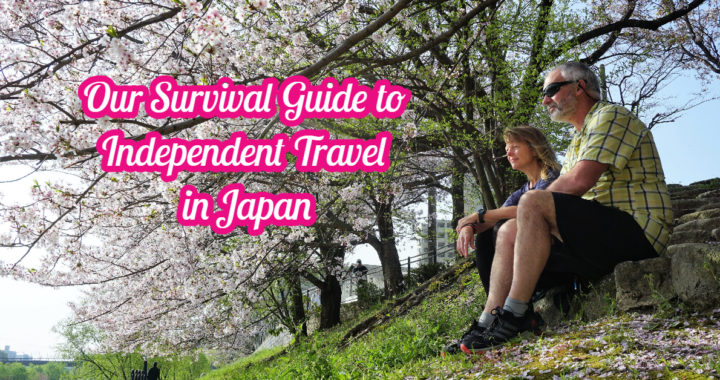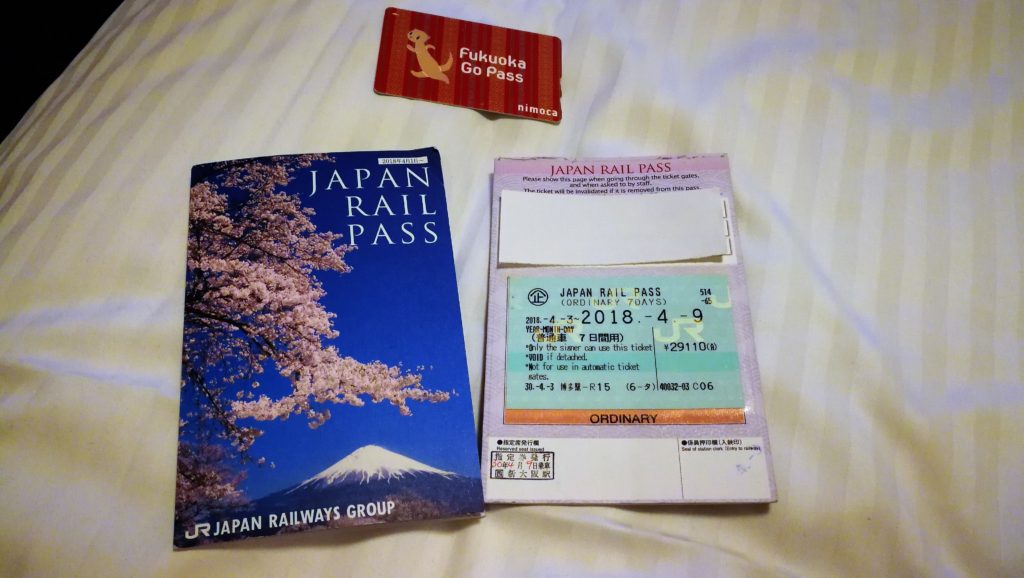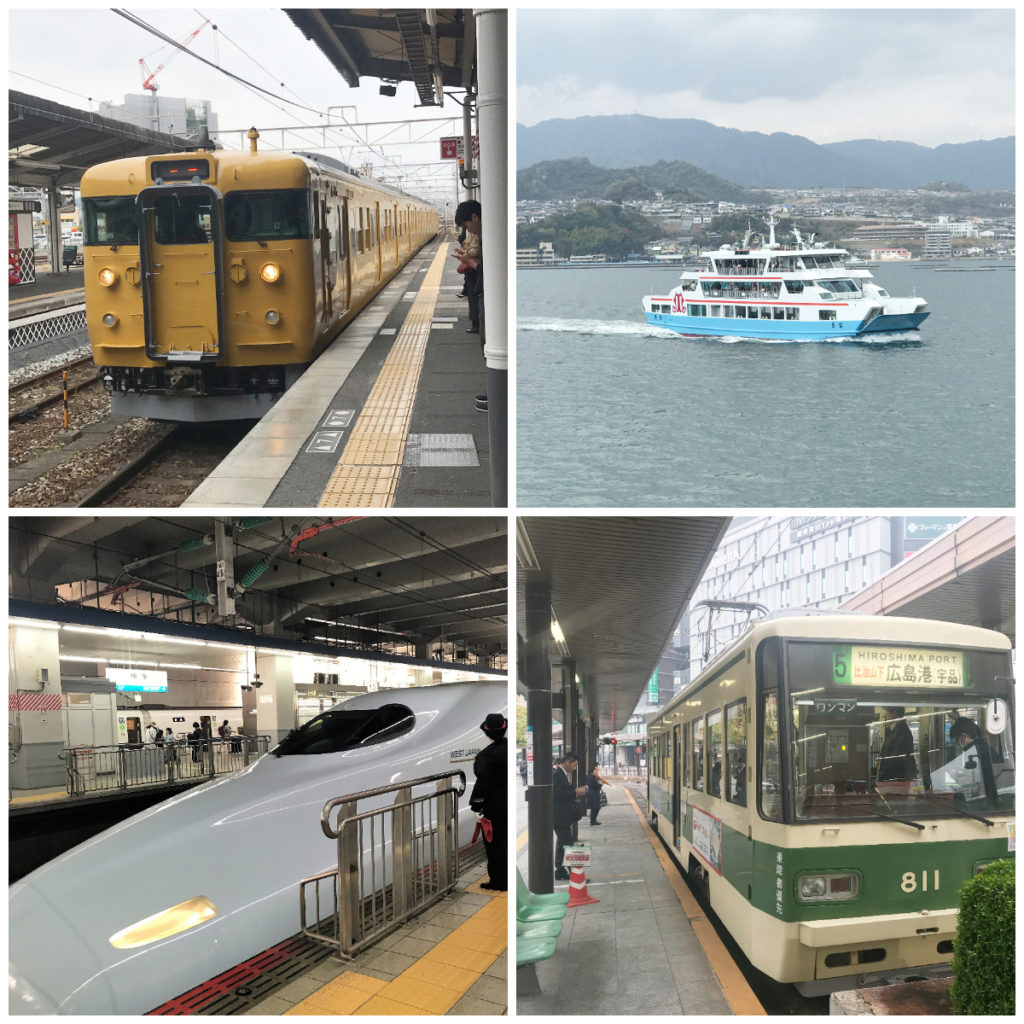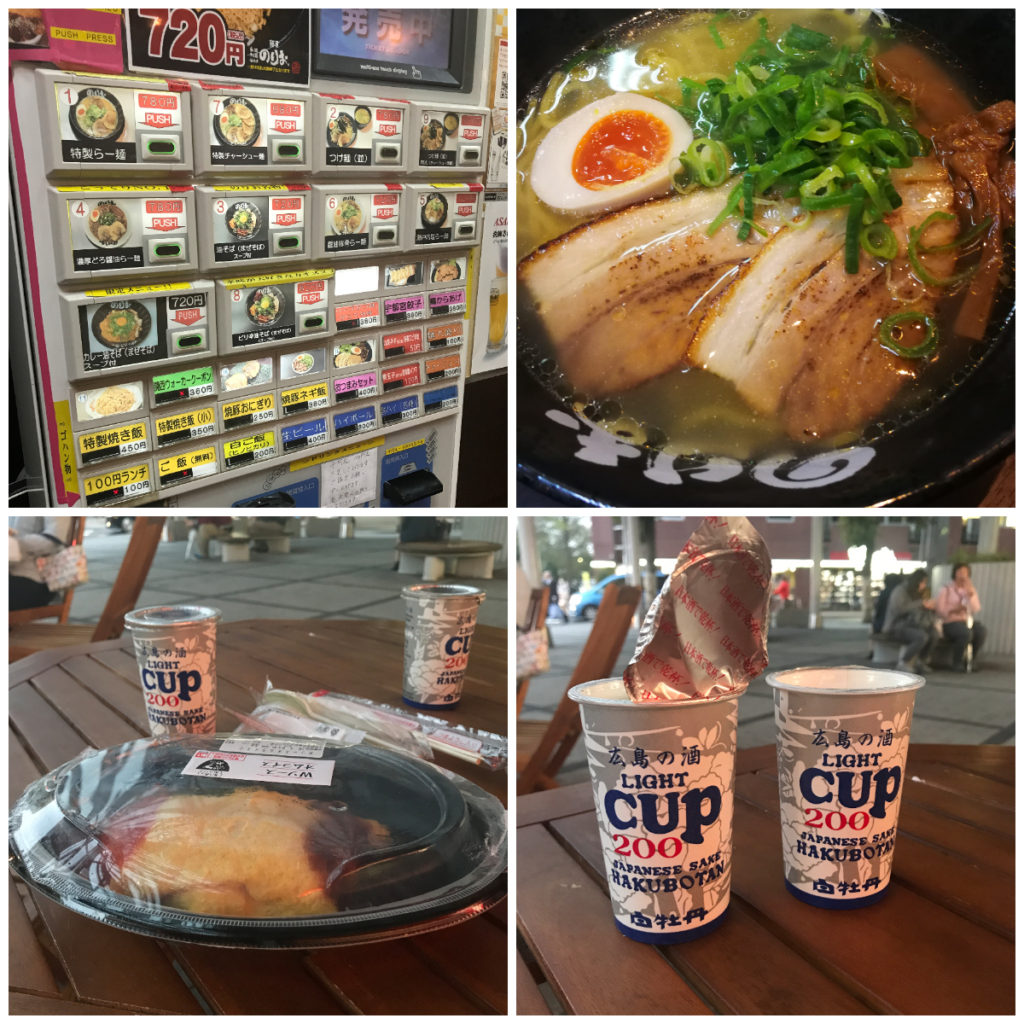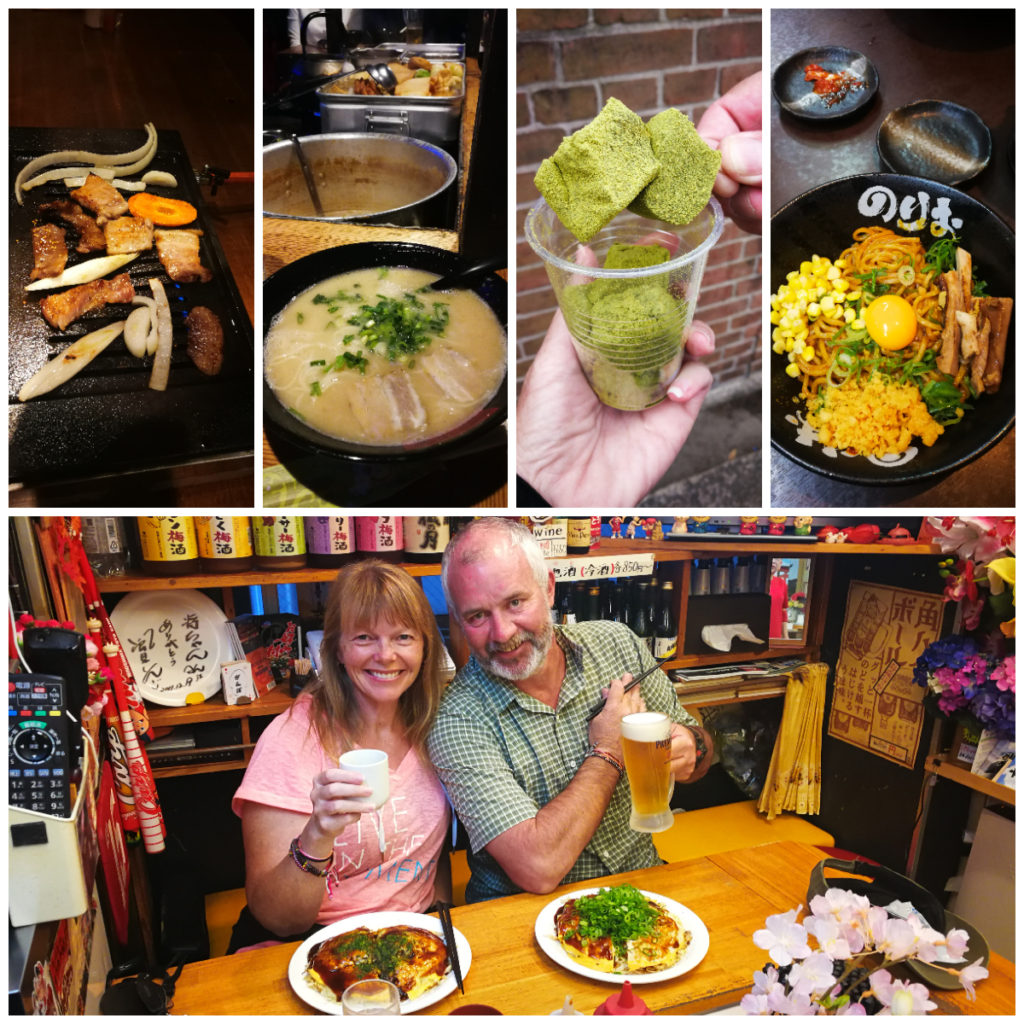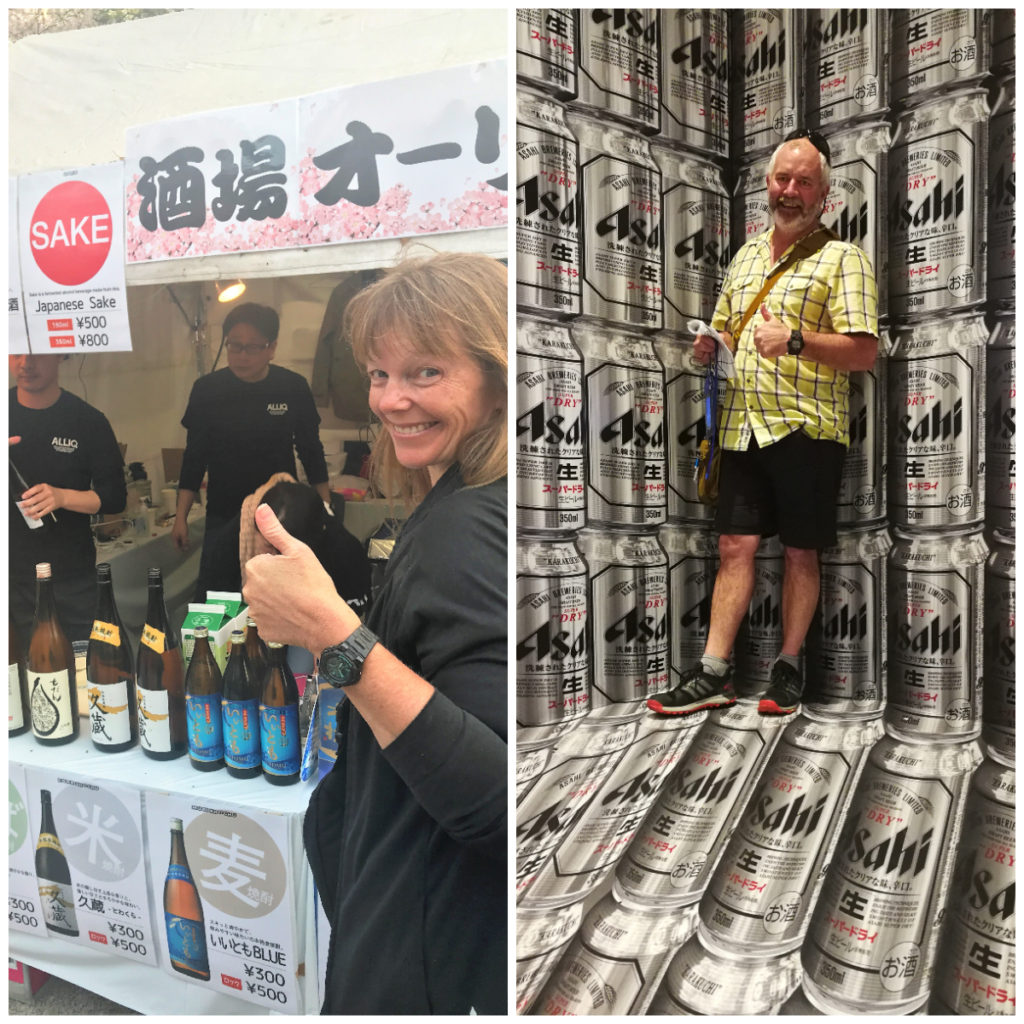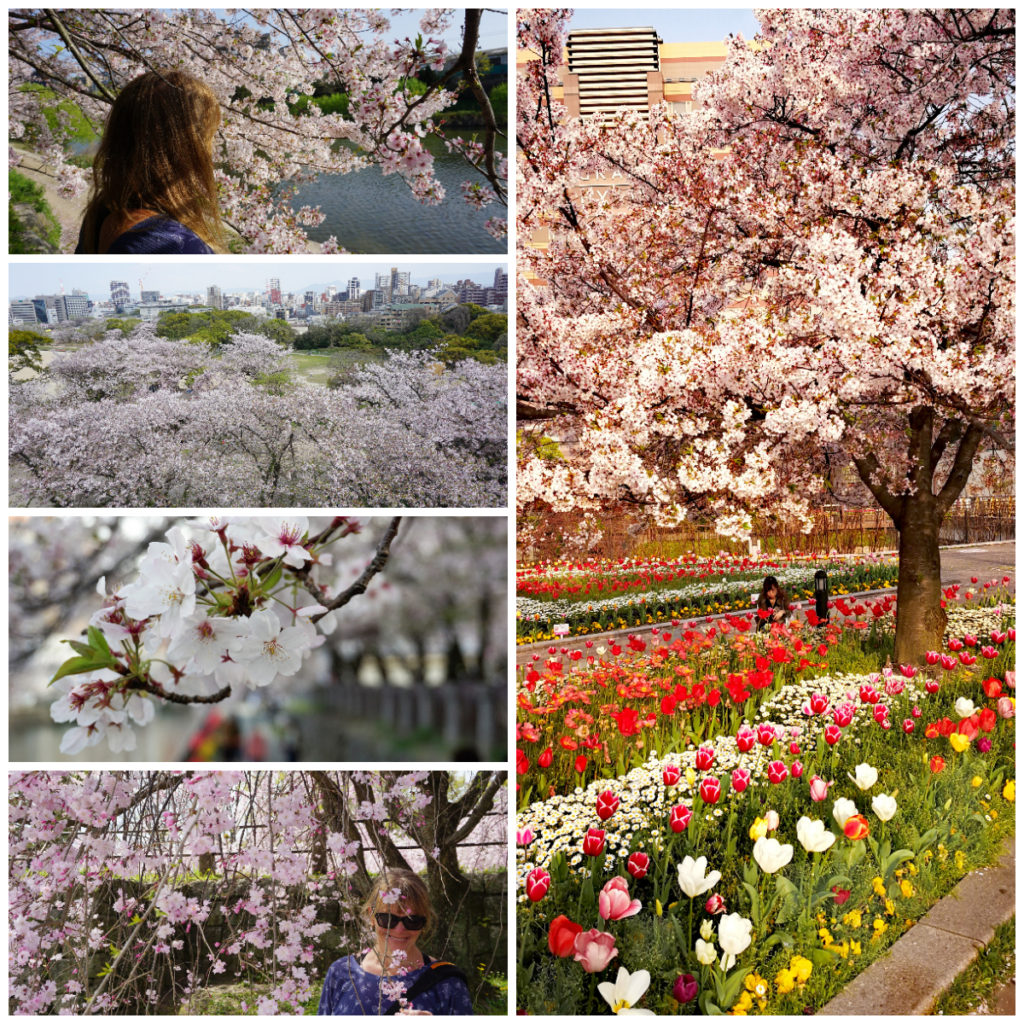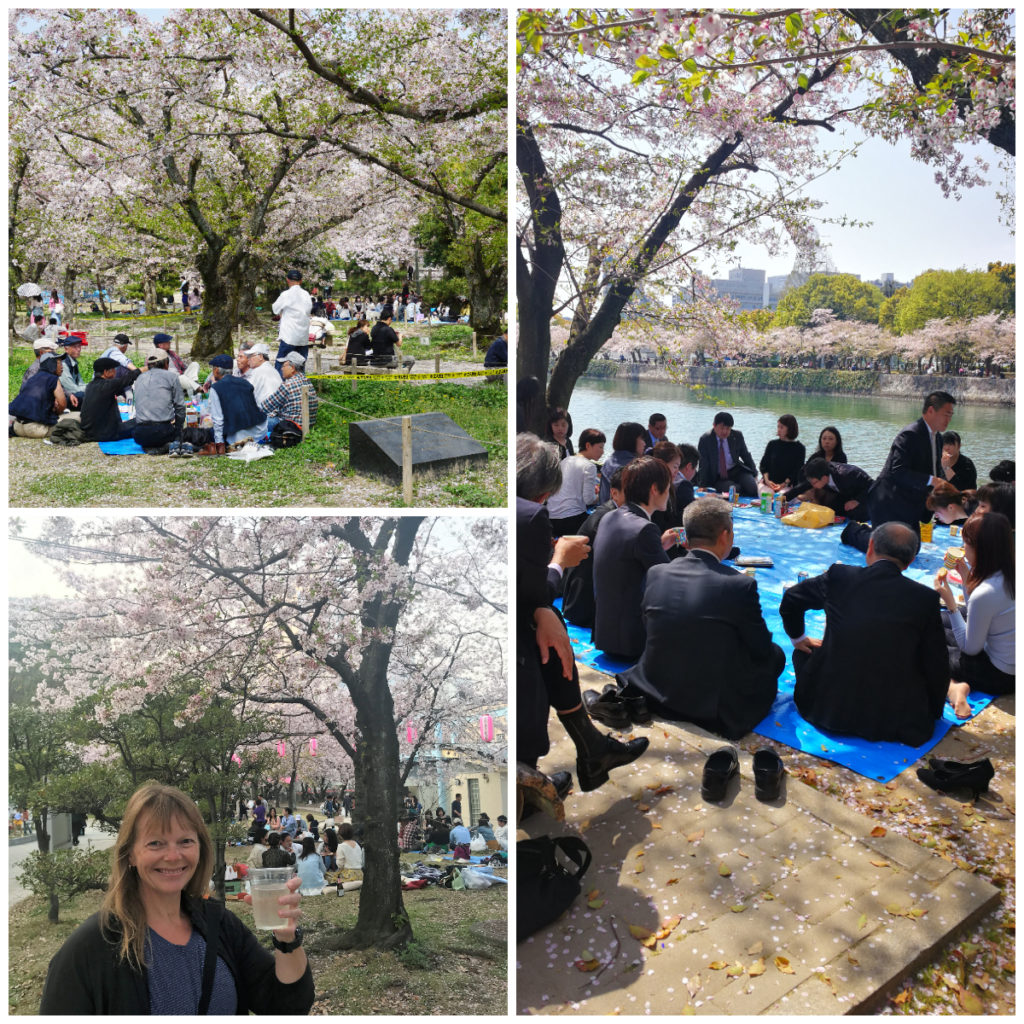Why Japan
We had nearly finished our House Sitting Assignment in Incheon, South Korea. Our next stop was Thailand for our next assignment. We had 12 days break and Japan is right next door to Korea. It made sense for us to plan a trip to a country we never thought we would get to.
Fukukoa in the south of Japan is closer to Seoul than Tokyo so the flights were cheap. It was an obvious choice for our first destination in Japan.
It was also Blossom season too which ‘sealed the deal’ completely.
Proof of Onward Travel
Visa and Entry Requirements are always good to know prior to travel to any country. One thing that can trip us up is whether we need to provide proof of onward travel out of the country we are arriving at. This is to prove that you do not intend to stay longer than the maximum time allowed.
NZ’ers may visit Japan for tourist purposes and stay for up to 90 days as long as they hold a passport which remains valid during their stay and do not receive any income while in Japan.
Sometimes we do not have our onward travel plans sorted by the time we arrive in some countries. Luckily we did have our flights booked to Bangkok and were able to show them at check-in when they requested to see proof. E-mail on phones is acceptable instead of a printed version.
There has only been one other time during our travels where we have had to provide proof and that was flying into Bali and Northern Sumatra, Indonesia.
We were asked to prove our travel out of Japan at time of checking in at Incheon Airport, Korea.
Sometimes this sort of information isn’t available on websites so it can be a bit hit and miss if you require it or not.
Japan Rail Pass
We, of course, did our research online and learnt a bit about the Japan Rail Pass. They are currently trialling foreigners being able to purchase a Rail Pass from within Japan (from certain stations only). The only other way to purchase your passes is prior to arriving in Japan.
There are 7, 14 or 21-day passes and they are activated from the first date of use. They have to be activated within 3 months of purchase.
We purchased two 7 day passes from Japan Experience online.
The current price list on passes are as follows:
7 Day Pass – 28,592 JPY/$361NZ, 14 Day Pass – 33,638JPY/$425NZ, 21 Day Pass – 58,362JPY/$739NZ
There are also courier costs to cover with FedEx from Paris to Japan. In our case, it cost us a total of $770NZ for two passes FedEx’d to our hotel.
They arrived right on the day before we wanted to activate them (Phew!).
Did it Pay Off?
Now the initial purchase costs seem quite expensive for 7 days of travelling. We had read on several occasions that they pay for themselves with one long trip. We put our faith in this information and hoped that it was going to pay off.
I diligently kept a tally of all the travel we did on the JR Lines (which is the rail system they cover). They also can include ferry rides (which we made sure we did) and limited buses. Our travel in 7 days totalled 131,738JPY ($1687NZ). This was a saving of $917NZ over above our purchase price.
Because we wanted to make sure we got our money’s worth, we travelled to places that we wouldn’t have otherwise put on our itinerary. We were of the mindset that it wasn’t actually costing us anything extra to get to these places…..so why not. These places actually turned out to be some of the highlights of our trip so it was a win/win situation all around.
The Bullet Train
The Bullet Trains (Shinkansen) is a fantastic way to travel long distances in Japan. The Japan Rail Pass is not valid on the “NOZOMI” AND “MIZUHO’ Shinkansen. Just make sure you travel on the “HIKARI, “SAKURA,” “KODAMA,” OR “TSUBAME’ Bullet Trains. The best website is hyperdia.com you can put in your departure and arrival station untick the bullet trains your pass doesn’t cover and you will view a list of all available trains, timings etc.
Make sure also, that when you are researching online for your trains, it is the name of the station, not always the name of the city ie Fukuoka station is Hakata. There is also two international airports in Tokyo and the main one is Narita. This is what all the train information is listed under.
You can take your chances and just turn up to get a seat in the Non-Reserved carriages or pre-book a seat at the ticket office at the station. This doesn’t cost you any extra and a seat is guaranteed. If you are travelling on a Friday, I would recommend that you pre-book a day or two out as two trains we were trying to travel on between Osaka and Tokyo were fully booked. We had to catch a slightly earlier train which still worked out fine for us.
Rail Pass Vs Transport Cards
The Japan Rail Pass will not cover you on the subway or on any of the private (non-JR) overland train lines. For this, you will need an IC card. Each area as their own IC card which can be used across Japan, ie Tokyo has Pasmo and Suica, ours was from Fukuoka and was the Nimoca IC card.
These cards are a convenient prepaid transportation card that allows you to enter the subway by simply placing the card over a card reader located on the fare gates. The card is rechargeable and can be used over and over. It can also be used for other railway and bus operators nationwide. Some regions in Japan offer a local transport or tourist card to use on the local transport system. It is much better to make sure you get a card that covers the entire country. We purchased a Nimoca IC Card in Fukuoka which we could use countrywide.
Local SIM Card
We always make sure that purchasing a local SIM card is a priority. We would literally be lost without it. Scotty (The App Man) wouldn’t be able to get us from A to B quite so smoothly. Whether it’s by train, car or even foot, Japan has some great guide apps as you travel around the country so mobile data is imperative.
We purchased an IIJmio travel SIM Card from Bic Camera at a cost of 2460JPY/$31NZ. We did need to top this up once while we were there as there was quite a bit of use during our travel.
Unlike China, all Apps and websites are accessible so it was good to have the tried and true tools to help us get around. The best App for day to day travel was Google Maps, it showed all the public transport with timings and options including which line also if it was a JR line or not. (so we could use our passes). One thing we did learn check the departure time and journey time, once we arrived at the platform and the train that arrived was to the same destination and left 10 minutes earlier so we jumped aboard, then we found out it was an All Stop train, the one leaving 10 minutes later was an express. Took us 40 minutes longer.
It’s Not a Cheap Destination
It would be fair to say that our Travel Budget went out the window while we were travelling Japan. It may well be that we won’t be in this ‘neck of the woods’ for quite some time so we wanted to make sure that we didn’t skimp on seeing and experiencing all we could (within reason).
We only had 12 days in Japan so decided to concentrate our visit in the area south of Tokyo. We stayed 2-3 nights in each destination so we could make sure we covered off the highlights of each area and surrounding districts.
Japan is definitely not a destination to be rushed.
Accommodation
Accommodation is not easy to find in the lower range, especially if you want to be situated in a good area. Location is everything. If you stay too far out then you will spend a lot of time and money on transport. It’s not always a fun experience trying to ride public transport in rush hour (or sometimes any time of the day!).
We scoured the websites to try and find the best deal. Space is a luxury in Japan. A lot of Air BnB’s was just someone’s bedroom they would let out and we would still be paying a premium for a lot of them. And when I say bedroom – I mean a small box room which you would be lucky to place two packs and still be able to shut the door.
Hotels.com
We book a lot our accommodation through Hotels.com. Most of our accommodation was classed as ‘Business Hotels’. It is geared for the travelling businessman. No matter where we booked into, all of them had reviews warning us of small rooms and bathrooms. Now, this doesn’t really worry us so long as we know what’s in store when we get there.
If you don’t expect too much, then you can’t be disappointed. To be fair, we thought the rooms were an acceptable size. Sure, the bed was pushed against the wall and we did have to strategically place our packs so we could maneuver around them. Oh, and it does pay to check that the other person isn’t standing behind the bathroom door before opening it. Drying yourself inside the bathroom cubicle is also challenging too.
We don’t spend a lot of time in our hotel room so it was more just somewhere to lay our heads and watch a bit of Netflix at night.
Most Expensive
Tokyo was by far the most expensive we stayed at. Our hotel was chosen purely because of its location. This is a city that has the most amazing train system – but it can also be a nightmare. Scotty’s skills were pushed to the limit on this one. Our hotel was very well located when it came to riding the trains. We also had a flight out at 10 am which meant commuting to the airport in Tokyo rush hour. We could walk (yes, even with packs) to catch trains all the way through to the airport. Who knew Tokyo International airport was an hour out of the city by high-speed rail! You can expect to be at least 1.5hr if you catch a bus.
Another bonus of booking through Hotels.com is that after 10 nights, you get a free night up to a certain value based on an average of your spend for those 10 nights. We were able to use this free night towards the cost of our Tokyo accommodation.
On average, our accommodation cost us an average of 9,852JPY/$124NZ per night over 11 nights.
Food
All of our accommodation (except Tokyo) didn’t include breakfasts. The extra they charged for this was quite excessive and we don’t usually like to do big breakfasts. We wouldn’t be getting our money’s worth.
We actually ate a lot from 7/11 stores and Family Marts. They are very well set up for takeout meals and coffee.
The Vending Machine Meal
Another popular system used in Japan when eating at a restaurant is ordering your meal via a vending machine. This took us a bit to figure out what was going on. Thank goodness for friendly locals who kindly showed us how to do it.
The vending machine is usually placed just outside or inside the front entrance. Each dish is on a separate button. Everything is in Japanese but it was ever so helpful when they had a picture to go with it! You simply feed in your money, push the corresponding number to the dish you want (including a cold beer or sake). The machine will give you change and print out a ticket/s. You go inside, give the ticket to cook behind the counter (usually the hotplate) and take a seat. In double quick time, you have a piping freshly made plate of absolute ‘yum’ placed in front of you with your cold drink of choice.
We were fascinated with this method of service. It is a brilliantly simple idea. The restaurant does not have to have extra service staff and the all the cooks do is well……..cook. They don’t even have to clear tables as all the patrons return their plates and cups back to them when finished…..easy eh?
Local Cuisine
We always try to suss out the local dish. Something that the area is famous or well known for. This way, we get to try some dishes that we would have possibly not chosen off a menu or ordered from a street stall. We got to sample locally made Sake and Beer, Japanese BBQ, Takoyaki (Octopus Balls), Green Tea Warabi Cake, Hakata Ramen, Tokyo Ramen, Okonomiyaki (savoury style pancake).
We would have liked to partake in some more of the finer traditional eating establishments but the menu prices really put this out of our reach.
Even basic dishes start at around 600JPY/$8NZ. We did have a ‘treat night’ and spent 4,500JPY/$57NZ. It still sounds cheap enough but soon adds up when you have to buy 3 meals a day for two people.
The Cherry Blossoms
It is impossible to think of springtime in Japan without a photo of an iconic image of a sea of cherry trees. The delicate pink cherry blossoms known as ‘sakura’ are swooned over by 100,000’s of locals and tourists.
We were so lucky to arrive in Fukuoka during the peak blooming time (1 April).
Now I wasn’t aware that catching the famous Japanese Cherry Blossoms is such a ‘time critical’ event. There are a number of reasons why one season could be less impressive than the other.
This year was unseasonably warmer so the blossoms were earlier than usual. They first bud in the south and move northwards as the weather warms.
There are websites dedicated to the Blossom Forecasts, informing you where and when are the best viewing times.
When the blooms arrive it is time for locals to indulge in one of Japan’s favourite pastimes – ‘hanami’ which means ‘flower viewing’. Groups of families, friends and even suit-wearing business people flock to the parks and spaces that have trees in blossom. There are blue canvas sheets placed on the ground, shoes removed and they all partake in a feast. We saw some pretty impressive spreads at these picnics with plenty of Asahi beer and sake flowing, helping to wash down the contents of their Bento Boxes.
We really enjoyed wandering through some of these parks at all times of the day and early evening seeing this age-old tradition – picnic and sake under the blossoms.
Cherry Blossom Tours
Many tourists travel great distances to see the Blossoms of Japan. I am not entirely sure how you can guarantee that you are going to see them at their best. There are so many variants to determine you are going to get ‘full’ of blossoms. Not only can temperatures have an impact on the budding times but if there is a strong wind blowing or heavy rain. Any of these weather events can blow and strip the trees of the blossoms.
Do also keep in mind that the more popular spots attract literally 100,000’s of visitors. You will be struggling to find a spot to take that perfect shot or even to seek some ambience to soak it all in.
Some of our best viewings were just wandering along some quiet rivers, small parks and out-of-the-way areas not listed on any website.
More Japan Blogs to Come
There will be more blogs to come covering the places we visited and the sites we experienced. We only covered off such a small area of the country. We might just need to go back one day.
